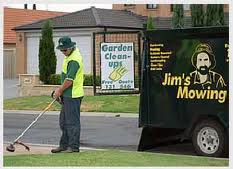KC points me to an article in Yahoo Finance:
A new AP-CNBC poll finds nearly one-third (31 percent) of U.S. residents believe they would need a minimum savings of $100,000 to $500,000 if retiring this year in order to be confident of living comfortably in retirement, and 22 percent believe the minimum is $1 million or more to retire comfortably.
I’ve just conducted my own survey and I’ve found:
– Nearly one-third (31 percent) of U.S. residents are totally deluded if they think that they can retire on $100,000 to $500,000 today.
– 22% are only slightly less blinded to the obvious to think that even $1 million will be enough to sustain them in retirement.
Let’s say that you can withdraw 4% of your portfolio ‘safely’ each year (a figure commonly promoted by the financial planning industry): then, you can give yourself a salary of:
– $4,000 per year if you retire today on $100,000
– $20,000 per year if you retire today on $500,000
– a whopping $40,000 per year if you retire on $1 million
Now, there’s be a whole bunch of people reading this who’ll say: “$40k a year, indexed for inflation … for life … without working. Now I can live with that!”
So, let’s see what it will take to get to $1 million in retirement savings; the same article says:
If you start with an initial $10,000 investment and your portfolio grows by 5 percent every year, here’s how much you need to save each month to reach your $1 million goal by age 70, according to Bankrate.com’s calculator.
• 25-year-olds have to save $450 a month. That’s just $15 a day for the rest of your working years.
• 35-year-olds have to save $850 a month.
• 45-year-olds have to save $1,700 a month.
• 55-year-olds have to save $4,000 a month. (Of course, with an average inflation rate of 3 percent, that $1,000,000 nest egg will only be worth $642,000 in today’s dollars. So that means you’ll likely wind up having to save even more.)
Did you check out that last point? Even if you could save these amounts, your $1 million is whittled down by inflation by the time you get there, so $40k expected retirement salary is only worth (in today’s dollars):
– $30,000 p.a., if you’re 55 and have 10 years to retirement
– $20,000 p.a., if you’re 45 and have 20 years to retirement
– $10,000 p.a. if you’re 35 and have 30 years to retirement
… or, to put it another way – because of inflation (even at only 3%), if you want to retire at age 65 on the equivalent of today’s $40,000 salary, you need to:
– Quadruple the above suggested monthly savings rates if you’re 25
– Double the above suggested monthly savings rates if you’re 45
– Add 50% to the above suggested monthly savings rates if you’re 55
… Oh, and did I mention that these numbers are after tax?
And, just when you were kidding yourself that you really can save yourself to a decent retirement: current CD rates are 1% and inflation is still running close to 0.5%, meaning that even a 4% withdrawal rate – previously described as ‘safe’ according to the financial planning industry – is committing financial suicide.
On current returns, to safely pay yourself $40,000 p.a. (indexed for just 0.5% inflation) you would need to retire with a nest egg of not just $1,000,000 …
… but, $8,000,000.
Or, you could just keep reading this blog and find a whole new way to look at your financial future 😉
[AJC: Try and find consensus on inflation; it’s hard! One article that I saw in researching this post suggested that inflation is currently running at just 0.5%, another says 4%, as suggested by Steve in the comments below – http://www.bls.gov/news.release/pdf/cpi.pdf. Since nobody really knows what inflation will be over a long enough period, I always use 3% – 4% just because it makes forward planning easy: just double your estimate for how much money you need to retire with for every 20 years until retirement]









